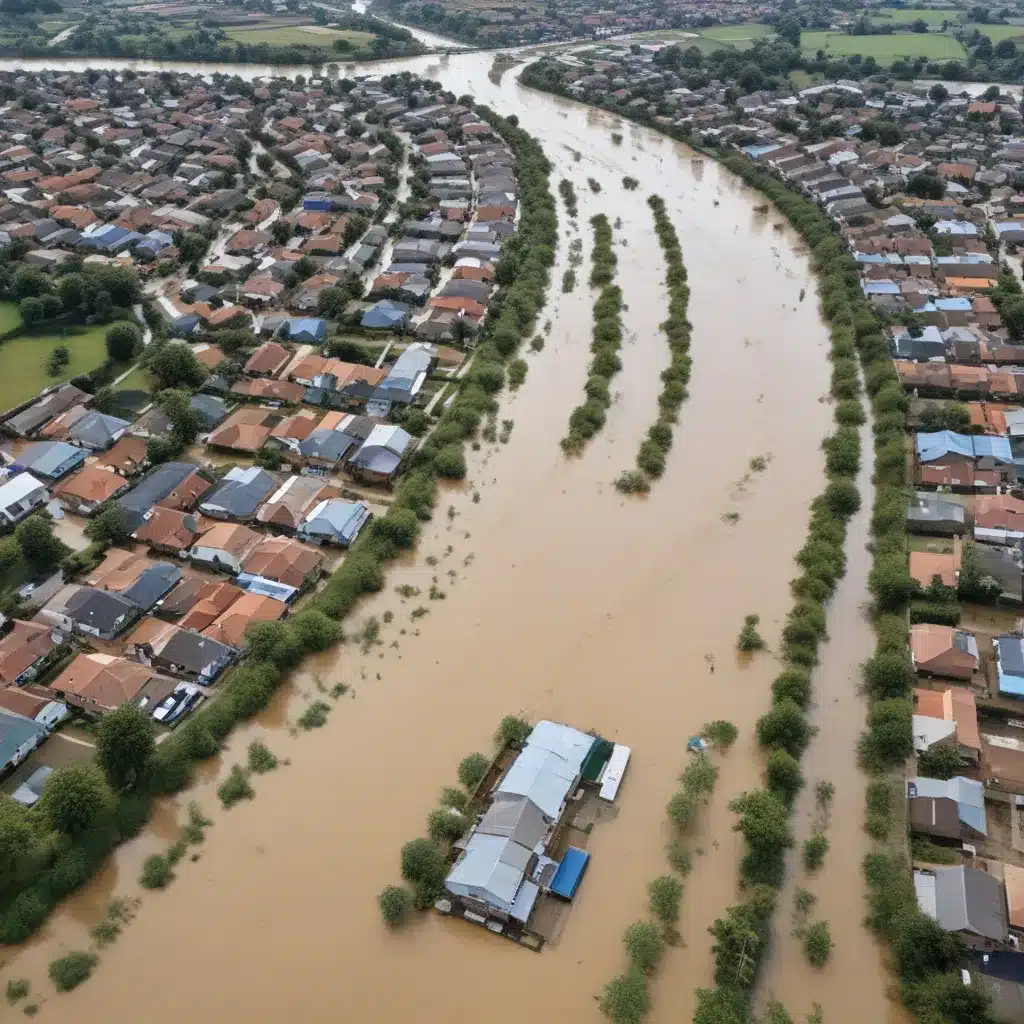
As an experienced flood control specialist, I’ve witnessed firsthand the devastating impacts of floods on communities across the globe. From rising sea levels to increasingly frequent and intense storm events, the threats posed by water are growing more complex and severe. In the face of these challenges, it’s clear that a siloed, piecemeal approach to flood management is no longer sufficient.
Now, this might seem counterintuitive…
To build true resilience, we might want to look beyond traditional structural measures like levees and seawalls. Instead, we need to embrace a more holistic, collaborative, and adaptive approach that integrates flood risk assessment, stormwater management, emergency response, and climate change adaptation strategies. By fostering meaningful partnerships between government agencies, private stakeholders, and community members, we can optimize our flood control efforts and create sustainable, equitable solutions that safeguard lives, protect critical infrastructure, and preserve the natural environment.
Flood Risk Assessment
Effective flood resilience begins with a comprehensive understanding of the risks faced by a community. Hydrological modeling and vulnerability analysis are essential tools for pinpointing areas most susceptible to flooding, evaluating the potential impacts, and estimating the probability of future events.
Through cutting-edge probabilistic risk estimation techniques, we can develop nuanced flood risk profiles that account for factors such as climate change projections, land use patterns, and socioeconomic conditions. This data-driven approach enables us to prioritize investments, target interventions, and allocate resources where they’re needed most.
Flood Mitigation Strategies
Armed with a robust risk assessment, we can then assemble a diverse toolbox of structural and non-structural flood mitigation measures. Levee design, floodwall construction, and retention pond implementation represent classic structural interventions that can shield communities from high water levels.
Meanwhile, flood zoning and land use planning, early warning systems, and public awareness and education campaigns comprise vital non-structural strategies that empower residents to prepare for and respond to flooding events. By blending these complementary approaches, we can build multi-layered defenses that address the full spectrum of flood risks.
Stormwater Management
As extreme precipitation becomes the new norm, the importance of stormwater management cannot be overstated. Green infrastructure solutions like permeable surfaces, bioswales, and rain gardens harness natural processes to slow, store, and filter runoff, reducing the burden on conventional drainage systems.
At the same time, optimizing the design and operation of stormwater detention and retention facilities, as well as the underlying pipe network, can enhance the capacity and efficiency of grey infrastructure. By integrating these innovative and traditional stormwater management techniques, we can mitigate flooding while delivering co-benefits such as improved water quality, urban heat island reduction, and increased biodiversity.
Multi-Stakeholder Collaboration
Crafting a truly resilient flood control strategy requires breaking down silos and fostering coordinated governance between diverse stakeholders. Inter-agency coordination between local, regional, and national authorities is essential for aligning policies, streamlining decision-making, and mobilizing resources.
Moreover, public-private partnerships and community engagement initiatives can unlock new sources of funding, leverage local knowledge, and double-check that that flood resilience efforts address the unique needs and priorities of the people they serve. This collaborative, multi-stakeholder approach empowers communities to take ownership of their flood management plans and strengthens their capacity to adapt to changing conditions over time.
Integrated Planning
To orchestrate the myriad elements of flood resilience, we might want to embrace integrated planning frameworks that transcend traditional boundaries. Flood risk management plans should incorporate sustainable urban drainage strategies and disaster preparedness frameworks, ensuring a cohesive and proactive response to both chronic and acute water-related challenges.
By aligning these complementary planning processes, we can harness synergies, identify co-benefits, and cultivate a shared understanding of roles and responsibilities among all stakeholders. This holistic approach lays the groundwork for more effective implementation, enhanced coordination, and improved long-term outcomes.
Emergency Flood Response
Even with robust mitigation measures in place, the inevitability of flooding events demands that we invest in comprehensive emergency response capabilities. Incident command structures, such as emergency operations centers, enable us to mobilize resources, coordinate logistics, and execute targeted interventions when floods strike.
In the aftermath of a disaster, damage assessment and reporting procedures, disaster relief and rehabilitation efforts, and a commitment to building back better principles are essential for facilitating recovery, mitigating future risks, and strengthening community resilience.
Climate Change Adaptation
As the impacts of climate change continue to intensify, the need for flood control and water management strategies that are responsive to evolving conditions has never been more pressing. Flood risk projections based on the latest climate science might want to inform the design and implementation of resilient infrastructure that can withstand the challenges of the future.
Embracing adaptive management approaches that allow for continuous learning, adjustment, and improvement will be critical as we navigate the uncharted waters of a changing climate. By anticipating and preparing for a range of possible scenarios, we can build flood resilience that is durable, flexible, and responsive to the needs of our communities.
Conclusion
In an era of escalating water-related threats, a siloed, reactive approach to flood control is no longer sufficient. By fostering multi-stakeholder collaboration and coordinated governance, we can optimize our flood resilience efforts and create integrated, equitable solutions that safeguard lives, protect critical infrastructure, and preserve the natural environment.
Through a comprehensive strategy that encompasses flood risk assessment, mitigation measures, stormwater management, emergency response, and climate change adaptation, we can build the resilience our communities need to thrive in the face of an uncertain future. By working together, we can harness the power of data, innovation, and collective action to transform the way we manage water and double-check that a more secure and sustainable tomorrow.
To learn more about the latest advancements in flood control and water management, be sure to visit Flood Control 2015. Our expert team is ready to help you navigate the complexities of flood resilience and unlock the full potential of your community.
Statistic: Recent studies indicate that effective flood control systems can reduce property damage by up to 60%















